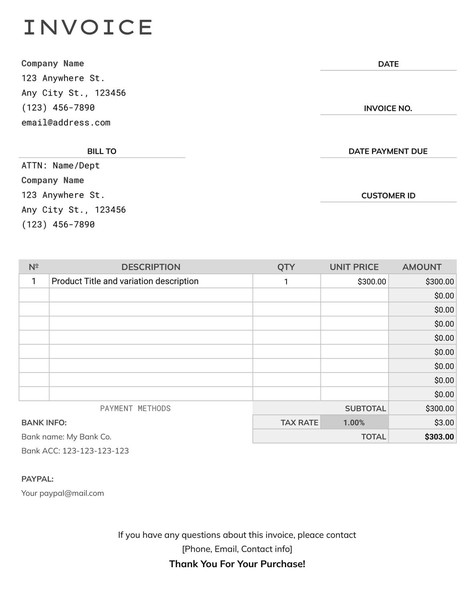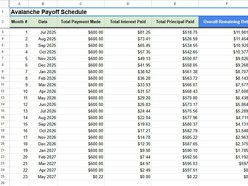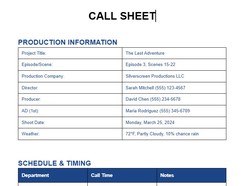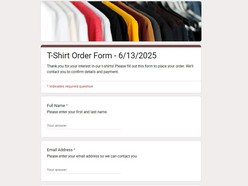Creating, managing, and customizing invoices doesn’t have to be a burden. Whether you’re a freelancer, entrepreneur, or small business owner, the key to getting paid on time and looking professional lies in your invoicing system. Google Docs is a powerful, free, and flexible tool for this purpose — especially when paired with thoughtfully designed templates.
In this detailed guide, we’ll examine three of the free Google Docs invoice templates, highlight their features, strengths, and best use cases, and offer expert-level guidance for choosing and customizing them for your workflow. You’ll also learn practical invoice tips that reduce errors, speed up payments, and simplify your billing process over time.
✅ Why Use Google Docs for Invoicing?
Before diving into the templates, it's important to understand why Google Docs is a smart choice for invoicing, especially for beginners and non-accountants:
Cloud-based & shareable: You can create and share invoices instantly via links or email without converting to PDFs or printing.
Customizable: Unlike rigid invoice generators, Docs lets you fully personalize layout, fonts, color, and content.
Compatible with Sheets: You can link calculations from Google Sheets or duplicate rows as needed for line items.
Collaborative: Share with accountants or co-founders and edit together in real time.
Accessible: Works across devices and operating systems with no paid software required.
Now, let’s explore the top templates and what makes them stand out.
1. Basic Invoice Template – Clean, Professional, and Straightforward
Key Features:
Clearly structured table with columns for services/products, quantity, rate, and total.
Header section includes logo area, invoice number, dates, and contact details.
Payment instructions and notes at the bottom.
Best used for: Freelancers, consultants, and contractors offering straightforward services.
Strengths:
This template works well for most industries that don’t require itemized taxes or multiple currencies. Its simplicity means fewer input fields, lower risk of error, and faster invoice creation.
🛠️ Customization Tips:
Add a company logo by inserting an image into the header.
If you charge per hour, add a “Hours” column.
Add a small “Thank you for your business” message to personalize the invoice.
Add your tax ID if required by your country’s regulations.
2. Modern Invoice Template – Fully Customizable and Feature-Rich
Key Features:
Clean, modern layout that includes service breakdowns, subtotals, tax calculation, and shipping (if applicable).
Space for detailed terms and payment methods.
Includes separate billing/shipping info.
Strengths:
This is the most flexible of the three and suitable for businesses that offer bundled services, charge sales tax, or need to show line-item subtotals.
It’s also visually professional and ideal for client-facing services like digital marketing, design, or consulting.
🛠️ Customization Tips:
Add automatic calculations using an embedded Google Sheet if you reuse it often.
Include links to payment portals (Stripe, PayPal, Wise, etc.).
Use color-coded headings or branding colors for a polished look.
Include a section for “project description” to document the work performed.
3. Black & White Invoice Template – Minimalist and Print-Friendly
Key Features:
Simplified design optimized for print or PDF export.
Clear layout with separate rows for hours, expenses, and project fees.
Space for additional terms and bank transfer instructions.
Strengths:
This template is ideal for professionals who invoice in environments where printouts are still common, such as legal, construction, or education sectors. Its strict black-and-white format ensures compatibility with monochrome printers.
🛠️ Customization Tips:
Add a gray divider between item rows to improve legibility.
Insert your bank info in a highlighted callout box for clarity.
Enable conditional formatting to flag unpaid invoices if you use Sheets.
Expert Tips for Invoice Preparation and Management
A well-designed template is just one part of the invoicing puzzle. Here are six essential best practices for managing invoices professionally:
1. Standardize Your Invoicing Terms
Set clear terms such as "Net 15," "Net 30," or "Due upon receipt." Explain late fees or early payment discounts to avoid confusion.
Pro Tip: Add a line like “Payment due within 14 days. Late payments may incur a 5% fee.”
2. Track Invoice Numbers and Status
Use a logical numbering system: INV-2025-001, INV-2025-002, etc. Keep a spreadsheet (or use Google Sheets) to track status: Sent, Paid, Overdue, Disputed.
3. Be Direct About Payment Instructions
Include clear bank details or payment links directly in the invoice. Reiterate accepted payment methods.
Example: “Bank Transfer – IBAN: XXXXXX, SWIFT: XXXXX. PayPal: your@email.com”
4. Send and Store Copies Securely
Always email a PDF copy and keep a digital backup. Cloud services (Google Drive, Dropbox) can help you stay organized.
5. Don’t Wait Until Month-End
Send your invoice as soon as work is completed. Waiting delays payment cycles and can create bottlenecks in your cash flow.
📊 Comparing the Three Templates
| Feature | Basic Invoice | Modern Invoice | Black & White Invoice |
|---|---|---|---|
| Ideal for | Freelancers, contractors | Small businesses | Legal/print-heavy work |
| Tax/Subtotals | No | Yes | Yes |
| Design style | Simple | Sleek & modern | Minimalist |
| Editable in Google Docs | No (uses Sheets) | Yes | No (uses Sheets) |
| Good for recurring use | Yes | Yes | Yes |
| Print optimized | Somewhat | Moderate | Highly |
Which Template Should You Use?
Choose the Basic Invoice Template if your invoicing needs are straightforward, and you don’t require taxes or shipping details.
Choose the Modern Invoice Template if you value a professional, polished design and need fields for taxes, detailed line items, or online payments.
Choose the Black and White Template if you prioritize print optimization or are working in traditional industries.
Each of these templates is available for free, instantly editable, and designed to help you spend less time formatting and more time running your business. Whether you use them as-is or as a starting point for automation, these templates can become a reliable part of your business toolkit.












